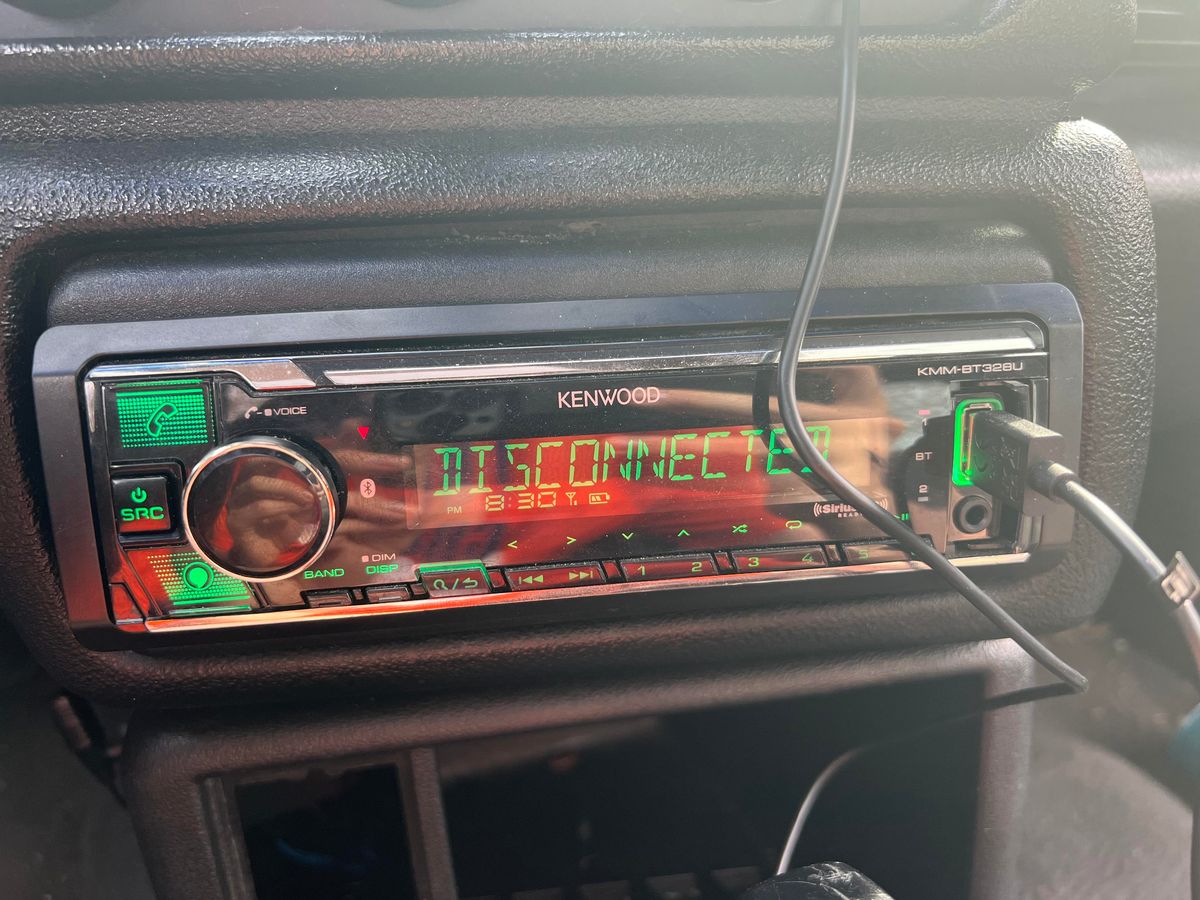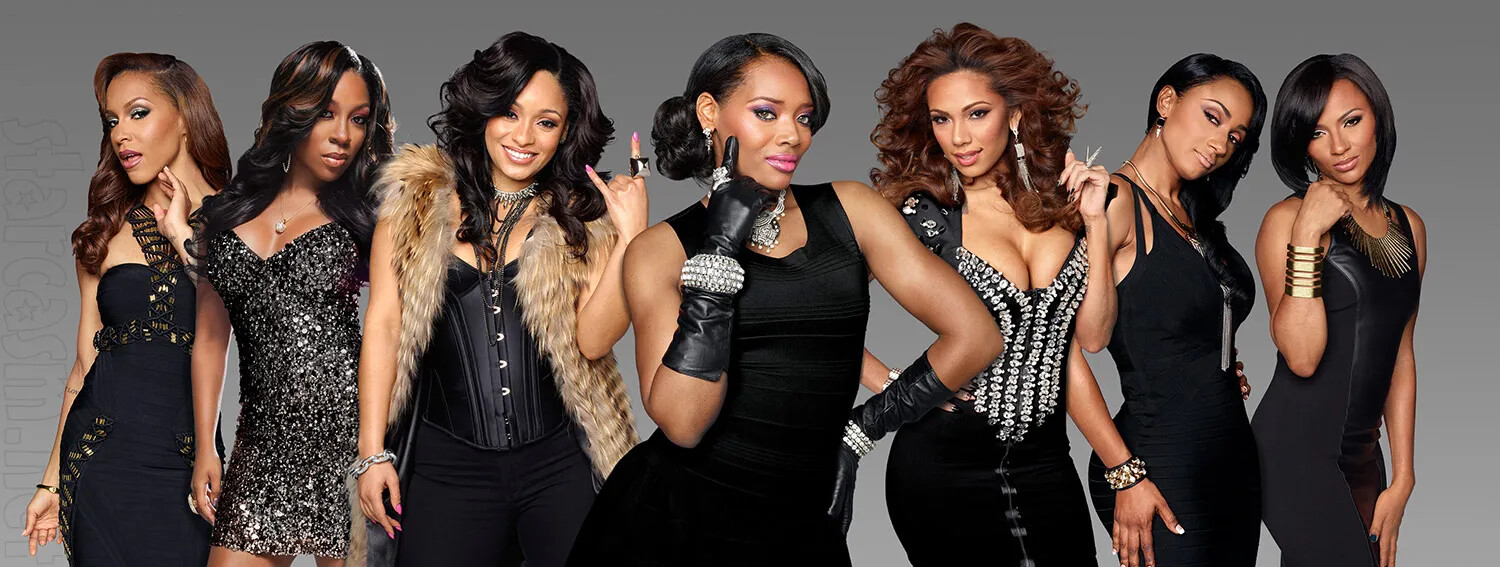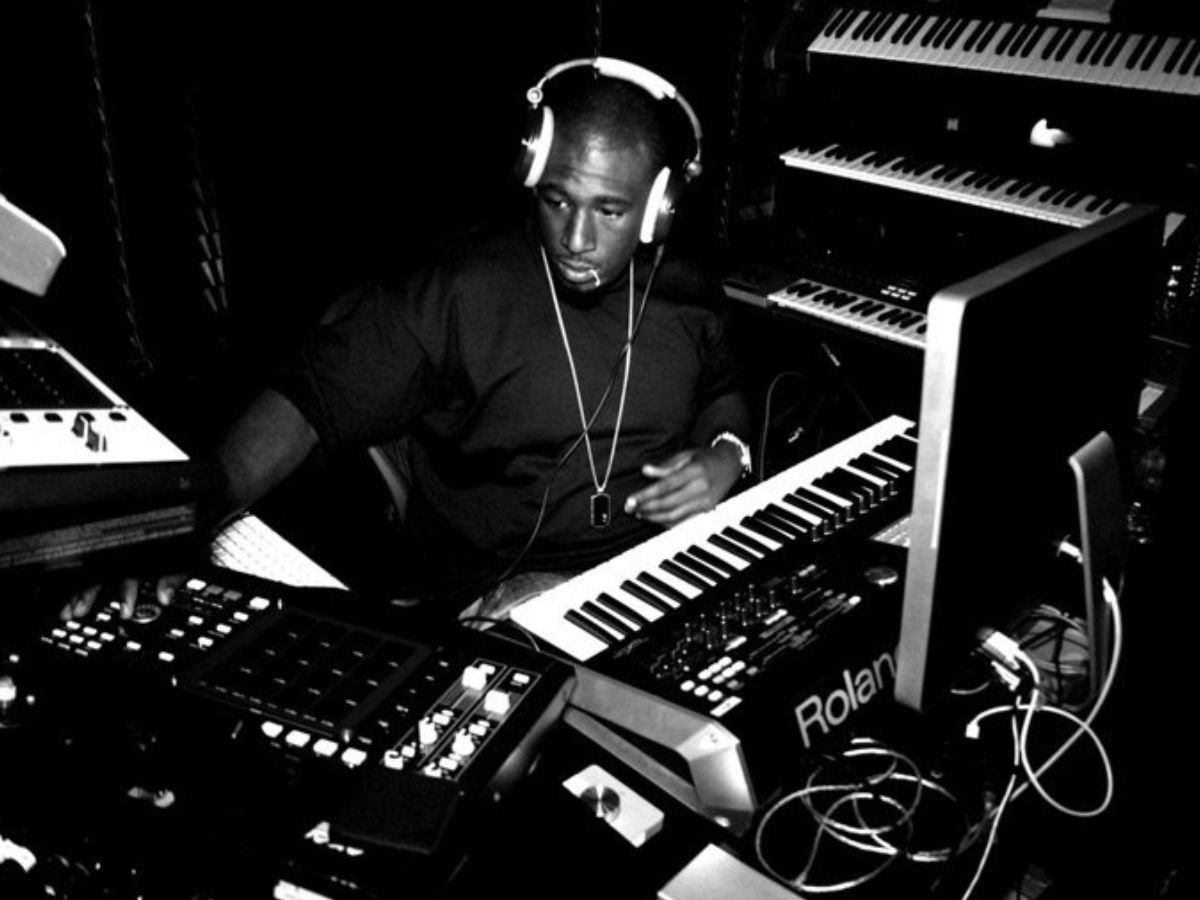

Hip Hop
How Has Hip Hop Changed Over Time
Published: November 2, 2023
Discover the evolution of hip hop and how it has transformed through the years. Explore the cultural impact and groundbreaking music that has shaped the genre.
(Many of the links in this article redirect to a specific reviewed product. Your purchase of these products through affiliate links helps to generate commission for AudioLover.com, at no extra cost. Learn more)
Table of Contents
Introduction
Hip Hop, born in the vibrant streets of South Bronx in the 1970s, has grown into a global cultural phenomenon. What started as a form of self-expression and cultural resistance for marginalized communities has since evolved into a multi-billion dollar industry that transcends borders and influences countless lives. In this article, we will explore the fascinating journey of Hip Hop, from its humble beginnings to its current state, examining the transformations it has undergone along the way.
Hip Hop emerged as a response to the social and economic challenges faced by African American and Latino communities in the Bronx. It was a creative outlet that allowed young people to express their frustrations and experiences through music, dance, graffiti, and fashion. With its raw and authentic energy, Hip Hop quickly gained popularity, reaching beyond the boundaries of its birthplace and capturing the attention of the world.
The Golden Age of Hip Hop, spanning from the late 1980s to the early 1990s, is widely regarded as a revolutionary era for the genre. It was a time when artists like Public Enemy, N.W.A., and A Tribe Called Quest used their music as a platform to address social issues such as racial inequality, police brutality, and political corruption. The Golden Age saw the emergence of storytelling, intricate rhymes, and complex wordplay, which set the standard for lyrical craftsmanship in Hip Hop.
However, the 1990s also witnessed the rise of gangsta rap, led by artists like Dr. Dre, Snoop Dogg, and Tupac Shakur. This subgenre took a more aggressive and confrontational approach, focusing on the realities of street life, gang culture, and violence. While controversial, gangsta rap brought attention to the harsh realities faced by many in disadvantaged communities and sparked debates about its impact on society.
As Hip Hop continued to gain mainstream recognition, it underwent a process of commercialization. Major labels saw the profit potential in the genre and began signing artists, often packaging them as marketable products rather than authentic expressions of art. This shift led to an influx of commercially-driven and formulaic songs, diluting the artistic integrity that had defined Hip Hop in its earlier years.
But as the commercialization of Hip Hop reached its peak in the late 1990s and early 2000s, new subgenres started to emerge, bringing fresh perspectives and sounds to the genre. Artists like Outkast, The Fugees, and Wu-Tang Clan experimented with blending Hip Hop with elements of funk, soul, reggae, and even rock, creating diverse and innovative music that pushed the boundaries of what Hip Hop could be.
The advent of technology, specifically the internet and digital music platforms, played a significant role in reshaping the Hip Hop landscape. Artists were no longer solely reliant on major labels for distribution and promotion. They could now independently release their music, reaching a global audience with ease. This democratization of the industry allowed for greater artistic freedom and diversity, as underground and independent artists gained more visibility and recognition.
Origins of Hip Hop
Hip Hop, born amidst the urban decay of the South Bronx in the 1970s, originated as a creative outlet and cultural movement for marginalized African American and Latino communities. It stemmed from the fusion of various artistic forms, including DJing, MCing (rapping), graffiti art, and breakdancing.
One of the key figures credited with the birth of Hip Hop is DJ Kool Herc. Recognized for his innovative technique of using two turntables to extend the instrumental breaks in songs, Herc laid the foundation for what would become the beat-driven backbone of Hip Hop music. These extended break sections provided a platform for dancers to showcase their skills and for MCs to engage the crowd with their rhythmic rhymes.
As Hip Hop gained momentum, block parties became the epicenter of the movement. These outdoor events brought together DJs, MCs, dancers, and graffiti artists, fostering a sense of community and creativity. The energy generated by these gatherings was infectious, fueling the growth of Hip Hop and its spread to other boroughs of New York City.
Simultaneously, graffiti art played a crucial role in shaping the visual aesthetics of Hip Hop. Artists would use spray cans to create elaborate murals that adorned the walls and subway cars of New York City. Graffiti not only served as a form of self-expression but also as a means of territorial marking and cultural representation.
Breakdancing, or b-boying, emerged as a form of street dance within the Hip Hop movement. Influenced by African and Latin dance styles, breakdancing featured acrobatic moves, spins, and intricate footwork. It became a way for individuals to express themselves physically and showcase their athleticism.
Rapping, or MCing, became the vocal component of Hip Hop. The MCs would deliver rhythmic and poetic rhymes over the beats created by DJs, engaging the audience and adding an extra layer of entertainment to the music. Rapping became a form of storytelling, providing a platform for individuals to voice their experiences and tell the stories of their communities.
Overall, the origins of Hip Hop can be traced back to the creativity, resilience, and sense of community fostered within marginalized neighborhoods. It was a dynamic movement that gave a voice to those who had been silenced, providing an outlet for self-expression and cultural pride. From its humble beginnings in the streets of the Bronx, Hip Hop would go on to redefine music, fashion, and popular culture on a global scale.
Golden Age of Hip Hop
The Golden Age of Hip Hop, spanning from the late 1980s to the early 1990s, is often hailed as a pivotal era for the genre. It was a time when artists pushed the boundaries of creativity, lyrical prowess, and social commentary, leaving an indelible mark on the landscape of Hip Hop.
During the Golden Age, artists such as Public Enemy, A Tribe Called Quest, and N.W.A. emerged, bringing a new level of consciousness and social awareness to Hip Hop. Public Enemy, led by frontman Chuck D, used their music to shed light on systemic racism, political corruption, and social injustices faced by African Americans. Their album, “It Takes a Nation of Millions to Hold Us Back,” became a powerful voice for marginalized communities.
A Tribe Called Quest, with their jazz-infused beats and introspective lyrics, brought a refreshing and intellectual element to Hip Hop. They tackled topics such as self-identity, relationships, and the struggles of everyday life. Songs like “Can I Kick It?” and “Bonita Applebum” showcased their innovative sound and laid-back yet thought-provoking approach.
N.W.A., on the other hand, emerged from the streets of Compton, California, with their raw and unapologetic style known as gangsta rap. They provided a stark depiction of the realities of street life, police brutality, and socio-economic challenges faced by many in disadvantaged communities. Songs like “Straight Outta Compton” and “F**k tha Police” ignited controversy and sparked debate about the role of Hip Hop in society.
Artists during this era were celebrated for their intricate wordplay, storytelling abilities, and socially conscious lyrics. They challenged the status quo and used their platform to speak truth to power. The Golden Age of Hip Hop is characterized by its commitment to pushing artistic boundaries, elevating the art form, and using music as a means of empowerment and social change.
Moreover, this era also saw the rise of influential record labels such as Def Jam and Wu-Tang Clan’s independent label. These labels became vehicles for artists to showcase their talents and connect with a wider audience. The artistic freedom provided by these platforms allowed for the diverse and innovative music that defined the Golden Age.
The impact of the Golden Age of Hip Hop continues to resonate today. It set a standard for lyrical excellence and artistic integrity within the genre, inspiring future generations of artists to delve deeper into their artistry and use their voices to address societal issues. The Golden Age represents a transformative period in Hip Hop history, where the genre soared to new heights and solidified its place as a powerful force in the music industry.
Emergence of Gangsta Rap
In the late 1980s and early 1990s, a new subgenre of Hip Hop emerged known as gangsta rap. Defined by its gritty and often controversial lyrics, gangsta rap shed light on the harsh realities of street life, gang culture, and violence in inner-city communities.
Artists such as Dr. Dre, Snoop Dogg, Ice-T, and Tupac Shakur became synonymous with gangsta rap, using their music to provide a raw and unfiltered narrative of their lived experiences. They delved into topics of crime, police brutality, drugs, and the struggles of individuals growing up in impoverished neighborhoods.
Gangsta rap was a cathartic expression for many artists who had witnessed or personally experienced the harsh realities of street violence and the consequences of systemic oppression. It served as a form of social commentary that showcased the socio-economic challenges faced by marginalized communities.
Controversial for its explicit lyrics and depiction of street life, gangsta rap sparked debates about the influence of music on society. Critics argued that it glorified violence and perpetuated negative stereotypes, while proponents contended that it was a reflection of the harsh realities faced by many communities.
Regardless of the controversy surrounding it, gangsta rap brought attention to social and political issues that were often overlooked by mainstream media. It gave a voice to those who had been marginalized or silenced, allowing them to share their stories and shed light on the systemic issues impacting their lives.
One of the most influential albums of the gangsta rap era was N.W.A’s “Straight Outta Compton.” Released in 1988, the album depicted the brutal and oppressive reality of life in Compton, California. Songs like “F**k tha Police” and “Gangsta Gangsta” confronted police brutality and shed light on the experiences of African Americans at the hands of law enforcement.
While gangsta rap faced criticism for its explicit content, it also provided a platform for artists to address social issues and advocate for change. Artists like Tupac Shakur used their music to deliver powerful messages of hope, self-reflection, and activism. Tupac’s lyrics often delved into topics such as racism, poverty, and the struggles of his community, making him a voice for the voiceless.
The emergence of gangsta rap challenged the mainstream perception of Hip Hop and expanded the narrative possibilities within the genre. It brought attention to the realities faced by individuals in marginalized communities and provided a platform for artists to address important social issues. While controversial at times, gangsta rap played a crucial role in shaping the direction of Hip Hop and leaving a lasting impact on the cultural landscape.
Mainstream Commercialization
In the late 1990s and early 2000s, Hip Hop underwent a significant transformation with the rise of mainstream commercialization. Major record labels recognized the profit potential of the genre and began signing artists, often packaging them as marketable products rather than authentic expressions of art.
This shift in the industry led to a proliferation of commercially-driven and formulaic songs that prioritized catchy hooks, infectious beats, and mainstream appeal over thoughtful lyrics and artistic integrity. Many artists found themselves pressured to conform to industry expectations and create music that would cater to a wider audience.
During this period, Hip Hop became increasingly intertwined with popular culture, influencing fashion trends, language, and even brand endorsements. The genre’s popularity skyrocketed, with artists like Eminem, Jay-Z, and 50 Cent achieving mainstream success and making significant strides in breaking down racial barriers within the music industry.
However, the commercialization of Hip Hop also sparked debates about authenticity and artistic integrity. Many argued that the music industry’s focus on commercial success compromised the genre’s roots as a platform for social and political commentary. The emphasis on materialism, violence, and the objectification of women became more prevalent in the mainstream Hip Hop scene, leading to criticism of the genre as a whole.
Despite these criticisms, commercialization brought Hip Hop to a broader audience, allowing it to become a dominant force in popular music. It opened doors for diverse voices and styles within the genre, as artists from different backgrounds gained exposure and achieved success.
The impact of mainstream commercialization can still be felt in Hip Hop today. While there are still artists who prioritize artistic expression and social commentary, there is also a heavy emphasis on mainstream appeal and commercial success. The line between underground and mainstream has become increasingly blurred as artists navigate the demands of the industry and strive to balance artistic authenticity with commercial viability.
It is essential to recognize the influence of mainstream commercialization on the evolution of Hip Hop. While it has brought the genre to new heights and expanded its reach globally, it has also raised questions about the role of artistic integrity and the balance between commercial success and cultural significance.
Despite these challenges, Hip Hop continues to evolve and adapt. Artists are now leveraging the power of digital platforms, such as streaming services and social media, to maintain creative control and reach audiences directly. The current state of Hip Hop reflects a complex web of commercialization, artistic expression, and the constant push and pull between the industry’s demands and the values of the culture that birthed it.
Rise of Subgenres
As Hip Hop continued to evolve and diversify, a multitude of subgenres emerged, bringing new sounds, styles, and perspectives to the genre. These subgenres allowed artists to explore different musical influences and experiment with innovative approaches, further expanding the boundaries of Hip Hop.
One of the influential subgenres that gained prominence in the late 1990s and early 2000s was alternative Hip Hop. Artists like OutKast, The Roots, and Mos Def infused Hip Hop with elements of funk, soul, jazz, and even rock, creating a unique and eclectic sound that defied traditional genre conventions. Their music became a bridge between Hip Hop and other genres, making it more accessible to a wider audience.
The popularity of trap music skyrocketed in the early 2010s with artists like Gucci Mane, T.I., and Future leading the way. Characterized by its heavy and dark beats, subsonic basslines, and aggressive lyrics, trap music originated from the southern United States and quickly spread across the country. It became synonymous with the party and club scene, and its influence can still be heard in mainstream Hip Hop today.
Additionally, the emergence of mumble rap brought a new wave of artists who prioritized melody and repetitive flows over intricate lyricism. Artists like Lil Uzi Vert, Lil Yachty, and Playboi Carti embraced this style, which received both praise and criticism for its departure from the traditional emphasis on lyrical dexterity. Mumble rap reflects a shift in the genre, placing more importance on the overall vibe and energy of a song rather than its lyrical content.
Conscious or socially conscious Hip Hop is another subgenre that gained popularity, particularly in response to the commercialization of the genre. Artists such as Kendrick Lamar, J. Cole, and Lupe Fiasco used their music to tackle social and political issues, providing introspective and thought-provoking commentary. Their lyrics engage with topics such as racial inequality, systemic injustice, and personal introspection, resonating with a generation seeking deeper substance and social awareness in their music.
Other subgenres, such as trap soul, emo rap, and Afrobeat-inspired Hip Hop, have also emerged, showcasing the genre’s global influence and the blending of cultural influences from different regions.
The rise of subgenres in Hip Hop demonstrates the genre’s ability to adapt and incorporate new sounds and influences. It reflects the artistic exploration and innovation taking place within the culture. These subgenres provide diversity and cater to the personal preferences of an increasingly diverse audience, allowing for a range of experiences and perspectives to be represented in Hip Hop music.
The presence of various subgenres within Hip Hop not only showcases the genre’s versatility but also provides a platform for artists to experiment, collaborate, and push the boundaries of what Hip Hop can be.
Impact of Technology
The advent of technology has had a profound impact on the Hip Hop industry, revolutionizing how music is created, distributed, and consumed. The integration of technology has not only transformed the production process but has also opened up new avenues for artists to gain exposure and connect with their audiences.
One of the most significant advancements in technology that has shaped Hip Hop is the rise of digital audio workstations (DAWs). DAWs like Pro Tools, Ableton Live, and FL Studio have made it easier and more accessible for artists to produce high-quality music from the comfort of their own homes. This democratization of music production has leveled the playing field and allowed for a greater diversity of voices and styles within Hip Hop.
The internet has also played a crucial role in the transformation of Hip Hop. Artists can now independently release their music online, bypassing the traditional gatekeepers of the music industry. Digital platforms like SoundCloud, YouTube, and social media have become valuable tools for artists to showcase their talent, build a fanbase, and connect with other artists and industry professionals.
Streaming services, such as Spotify, Apple Music, and TIDAL, have revolutionized the way music is consumed. These platforms have made it more convenient for fans to access a vast library of music, bringing Hip Hop to a global audience. Additionally, streaming has provided artists with new revenue streams, as they can earn royalties based on the number of streams their songs receive.
Technology has also revolutionized collaborations within the Hip Hop community. Artists can now collaborate remotely, exchanging files and ideas without the need for physical presence. This has led to an increase in cross-genre collaborations and the blending of different musical styles.
The rise of social media platforms has given artists a direct line of communication with their fans. Artists can interact with their audience, share updates, and even market their music independently, reducing the reliance on traditional marketing strategies and record labels.
Furthermore, technology has transformed the live performance experience. Artists utilize advanced stage setups, visual effects, and interactive elements, enhancing the audience’s immersion and creating unforgettable live shows.
However, there are also challenges that come with the integration of technology in Hip Hop. The ease of accessibility has led to oversaturation, making it more difficult for artists to stand out in a crowded marketplace. Additionally, the instant gratification culture cultivated by technology poses a risk of prioritizing quantity over quality, leading to a potential decline in the overall artistic value.
Overall, the impact of technology on Hip Hop has been both transformative and empowering. It has democratized the creation and distribution of music, provided new avenues for artist discovery, and enhanced the overall experience for both artists and fans. As technology continues to evolve, so too will its impact on the Hip Hop industry, shaping the future and pushing the boundaries of what is possible within the genre.
Social and Political Influence
Hip Hop has always been more than just music; it is a cultural movement that has had a significant social and political influence since its inception. From its origins in the South Bronx as a form of self-expression for marginalized communities, Hip Hop has been a platform for addressing social injustices, advocating for change, and amplifying the voices of the unheard.
One of the key ways in which Hip Hop has made a social impact is by shining a light on systemic inequalities and giving a voice to communities that have historically been marginalized. Artists like Public Enemy, N.W.A., and Kendrick Lamar have used their music to highlight issues such as racial inequality, police brutality, poverty, and socioeconomic disparities.
Hip Hop lyrics have often functioned as a form of storytelling and commentary, providing a window into the lived experiences of individuals in disadvantaged communities. Through their rhymes, artists share personal narratives, shed light on social issues, and offer critiques of the status quo.
In addition to addressing social injustices, Hip Hop has also played a significant role in political movements. It has been used as a tool for advocating for change, encouraging civic engagement, and inspiring activism. Artists like Chuck D and KRS-One have been influential in bringing political consciousness to the forefront of Hip Hop music, encouraging listeners to question authority, challenge oppressive systems, and participate in social movements.
The impact of Hip Hop on politics is evident in the way it has inspired and mobilized communities. Hip Hop has provided a platform for individuals to express their frustrations, share their stories, and call for social change. Artists have collaborated with grassroots organizations, participated in political campaigns, and used their celebrity status to amplify political messages.
Hip Hop has also had a significant influence on fashion, language, and cultural trends. From baggy clothing, sneakers, and gold chains to the use of slang and the appropriation of elements from street and urban cultures, Hip Hop has shaped popular culture and influenced mainstream fashion. Its impact on popular culture has transcended geographic boundaries, reaching audiences across the globe.
However, it’s important to acknowledge that while Hip Hop has been a vehicle for social and political change, it has also faced criticism for promoting negative stereotypes, materialism, and misogyny. It is a complex and multifaceted genre that reflects the diversity of its artists and the complexities of the societies in which they live.
Overall, the social and political influence of Hip Hop cannot be denied. It has given voice to the marginalized, challenged societal norms, and brought significant cultural and political issues to the forefront of public consciousness. From grassroots movements to political campaigns, Hip Hop has proven its power to shape and influence the world we live in.
Current State of Hip Hop
Hip Hop continues to be a vibrant and influential force in contemporary music and popular culture. As it stands today, the genre has evolved and diversified, embracing new styles, sounds, and influences. The current state of Hip Hop reflects both the legacy of its predecessors and the ever-changing landscape of music and society.
One notable characteristic of the current Hip Hop scene is its global reach. From its humble beginnings in the streets of the Bronx, Hip Hop has transcended geographic boundaries, with artists from all corners of the world embracing and incorporating the genre into their music. This global influence has led to the emergence of unique and localized subgenres, blending Hip Hop with traditional cultural elements to create a fusion of sounds.
Within the mainstream, Hip Hop has experienced a surge in popularity, with artists like Drake, Kendrick Lamar, and Cardi B dominating charts and receiving widespread acclaim. These artists have not only achieved commercial success but have also pushed boundaries musically, incorporating diverse sounds, experimenting with different styles, and delivering socially conscious messages. Their success speaks to the genre’s ability to evolve and stay relevant in an ever-changing musical landscape.
Furthermore, the rise of streaming platforms and social media has democratized the industry, providing independent and up-and-coming artists with unprecedented opportunities for exposure and audience engagement. Artists can now release their music independently, build a dedicated fan base through online platforms, and connect directly with their listeners. This shift has allowed for greater diversity and authenticity within Hip Hop, as artists no longer solely rely on record labels for recognition.
In terms of musical styles, the current state of Hip Hop showcases a wide range of influences and subgenres. Artists are blending different elements, from trap and drill to lo-fi and experimental sounds, pushing the boundaries of what Hip Hop can be. This experimentation has led to a more diverse and eclectic sound, appealing to a broader audience and crossing over into other genres.
Socially conscious and politically charged Hip Hop has also maintained a strong presence in the current landscape. Artists like J. Cole, Run the Jewels, and Rapsody continue to use their music to address social issues, advocate for change, and challenge the status quo. The impact of these artists demonstrates the ongoing power of Hip Hop as a tool for amplifying voices and driving social movements.
However, it is important to acknowledge that the current state of Hip Hop is not without its criticisms. Some argue that the genre has become more focused on materialism, ego, and commercial success, with some artists prioritizing style over substance. Additionally, the influence of social media and the quest for instant fame has led to an oversaturation of artists and a constant churn of content that can dilute the artistic integrity of the genre.
Despite these challenges, Hip Hop continues to evolve and adapt. It remains a powerful form of self-expression, cultural commentary, and a catalyst for change. From the streets to the charts, Hip Hop stands as a testament to the resilience, creativity, and enduring impact of a genre that started as a voice for the marginalized and has now become a global cultural phenomenon.
Conclusion
Hip Hop has undergone a remarkable journey from its origins in the South Bronx to its current state as a global cultural phenomenon. Throughout its history, Hip Hop has continuously evolved and adapted, reflecting the societal, technological, and artistic changes of the times.
From its humble beginnings as a form of self-expression for marginalized communities, Hip Hop has become a platform for social and political commentary. It has given voice to the unheard, shed light on social injustices, and influenced cultural movements. The Golden Age of Hip Hop showcased the genre’s lyrical excellence and social consciousness, setting the stage for the diverse subgenres that would emerge.
Mainstream commercialization brought both increased visibility and challenges to the genre. While it opened doors for success and innovation, it also raised questions about authenticity and artistic integrity. The rise of subgenres demonstrated the genre’s ability to diversify and appeal to a wide range of tastes and cultural influences.
Technology has played a pivotal role in shaping the landscape of Hip Hop. Digital production tools, online platforms, and streaming services have enabled artists to create, distribute, and connect with audiences in unprecedented ways. The impact of Hip Hop on society has extended far beyond the music itself, influencing fashion, language, and popular culture on a global scale.
The current state of Hip Hop showcases the genre’s global reach, diversity, and ongoing social and political influence. From socially conscious artists addressing pressing issues to the experimentation with different sounds and styles, Hip Hop continues to evolve and push boundaries.
While the genre has faced criticisms and challenges, Hip Hop remains a powerful form of self-expression, cultural commentary, and a catalyst for change. It continues to provide opportunities for artists to share their stories, challenge societal norms, and inspire personal and social transformation.
As we look to the future, it is clear that Hip Hop will continue to evolve and adapt to the ever-changing landscape of music and society. Its ability to innovate, amplify marginalized voices, and provide a platform for social and political discourse ensures that it will remain an influential and integral part of the global cultural landscape for years to come.











